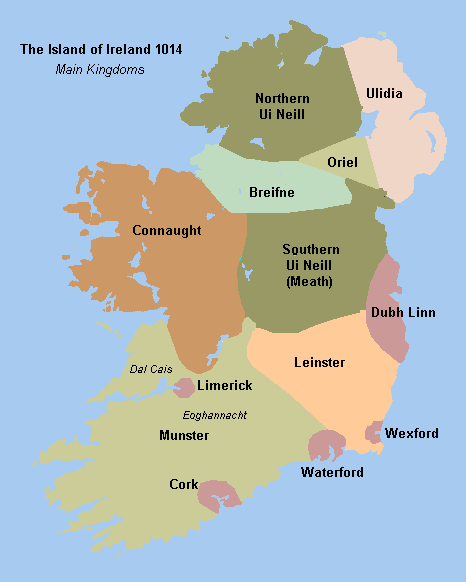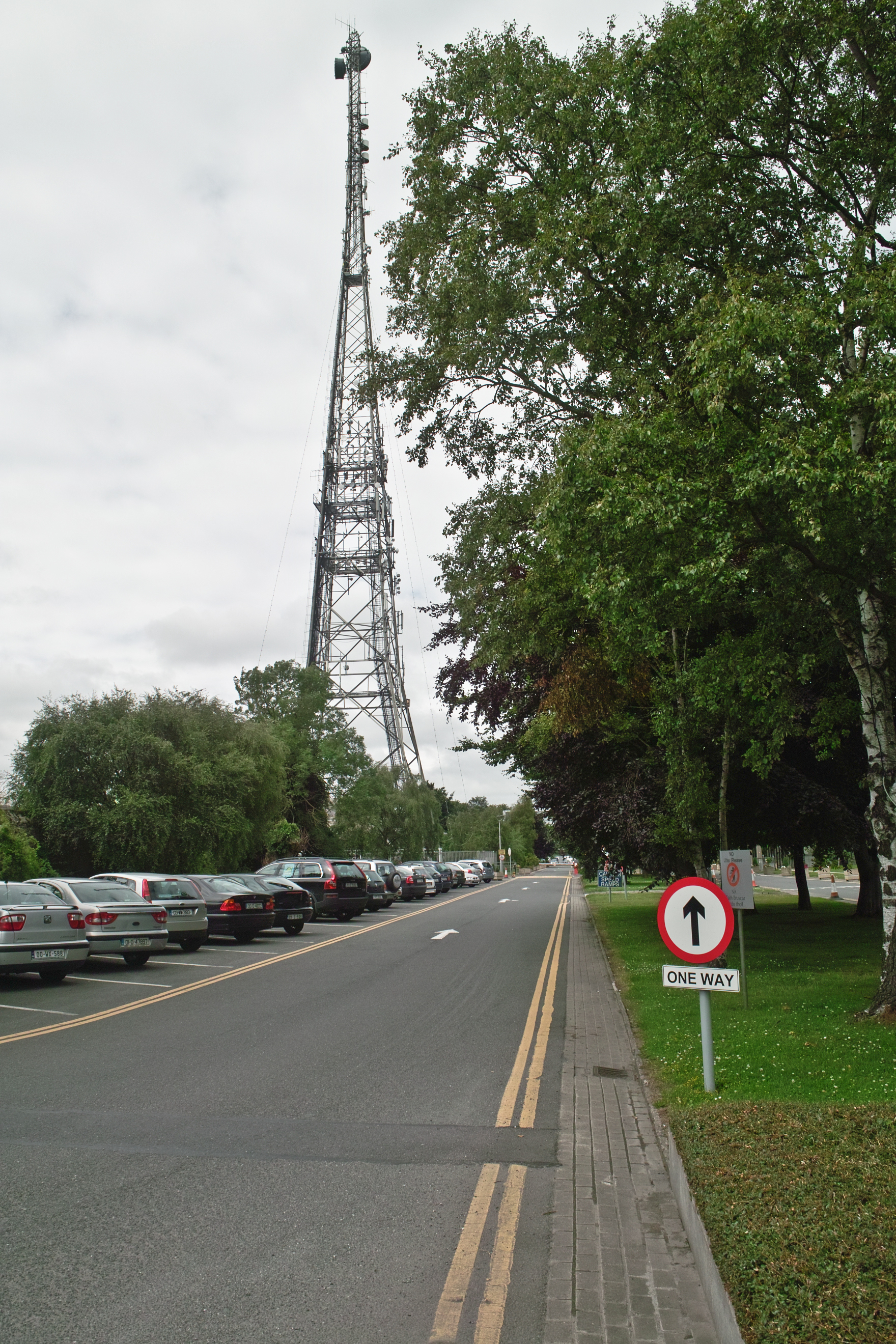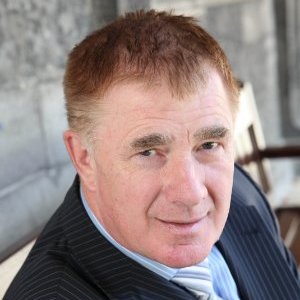|
Uí Díarmata
Uí Díarmata was a local kingdom located in what is now north County Galway. Origins The ruling dynasty took its name from King Diarmait Finn of Connacht (died 833), and the territory in turn was named after them. It seems to have been created by the Uí Briúin in the ninth century during a wave of expansion under his grandson, Uatu ua Diarmada. Its kings appeared regularly in the annals from 971 onwards Concannon By the 11th century its kings had taken the surname Ó Con Cheanain (anglicised "Concannon). The Annals of Connacht state that ''"Domnall son of Aed O Con Chenainn, king of the Uí Diarmata, and Muirchertach his brother"'' were killed at the Second Battle of Athenry in 1316. By this stage it had become incorporated into the territory of ''Clantaie O Dermod'' ( Clann Taidg and Uí Díarmata) ruled by the de Berminghams, Baron Athenry. Writing at Tuam on 13 September 1838, John O'Donovan wrote ''"Henry O'Concanon Esq. of Waterloo near Glentaun in the parish of K ... [...More Info...] [...Related Items...] OR: [Wikipedia] [Google] [Baidu] |
Clann Taidg
Clann Taidg was the name of a medieval cantred located in what is now County Galway, Ireland. It consisted of the parishes of Athenry, Monivea, Tiaquin, Kilkerrin, Moylough, Killererin, Ballynakill-Aghiart (in Killian), Kilmoylan, and possibly Abbeyknockmoy. Clann Taidg consisted of a number of túaths, including Corca Mogha and Uí Diarmata. Clann Taidg seems to have come into existence during a wave of expansion by the Uí Briúin, specifically in the reign of King Tadg of Connacht (925-956). His son, Muiredaig mac Tadg, was the ancestor to the Uí Taidg an Teaghlaigh sept of the Síl Muiredaig who are recorded in the annals from 1048 onwards. The area, previously part of Uí Briúin Seóla, was called after the sept who are believed to have become its lords sometime in the mid-eleventh century. However, by the end of the twelfth century it was said to have been seized by Donn Cathaig Mór Mac Airechtaig of Síl Muiredaig. Adrian Martyn notes that "an Teaghlaigh ... [...More Info...] [...Related Items...] OR: [Wikipedia] [Google] [Baidu] |
Ireland Early Peoples And Politics
Ireland (, ; ; Ulster Scots dialect, Ulster-Scots: ) is an island in the North Atlantic Ocean, in Northwestern Europe. Geopolitically, the island is divided between the Republic of Ireland (officially Names of the Irish state, named Irelanda sovereign state covering five-sixths of the island) and Northern Ireland (part of the United Kingdomcovering the remaining sixth). It is separated from Great Britain to its east by the North Channel (Great Britain and Ireland), North Channel, the Irish Sea, and St George's Channel. Ireland is the List of islands of the British Isles, second-largest island of the British Isles, the List of European islands by area, third-largest in Europe, and the List of islands by area, twentieth-largest in the world. As of 2022, the Irish population analysis, population of the entire island is just over 7 million, with 5.1 million in the Republic of Ireland and 1.9 million in Northern Ireland, ranking it the List of European islands by population, ... [...More Info...] [...Related Items...] OR: [Wikipedia] [Google] [Baidu] |
Richard Luke Concanen
Richard Luke Concanen, O.P. (December 27, 1747 – June 19, 1810) was an Irish-born Catholic prelate who served as the first Bishop of New York from 1808 to 1810. He was a member of the Dominicans. Biography Early life Richard Concanen was born on December 27, 1747, in Connaught in the Kingdom of Ireland to a wealthy family. He received an early education in Ireland, but Catholic schools were outlawed there. He was forced to travel to Italy at age 17 to continue his education. Deciding to become a priest in the Dominican Order, Concanen probably entered the Irish Dominican College in Louvain, Belgium. He took his vows to the Dominicans in Louvain and assumed the name of Luke. The Dominicans then sent him to Rome to study philosophy at Dominican House of Studies, the predecessor to the Pontifical University of St. Thomas Aquinas. After finishing his philosophy coursework in 1769, he began studying theology at San Clemente al Laterano, a convent for seminarians run by ... [...More Info...] [...Related Items...] OR: [Wikipedia] [Google] [Baidu] |
Connacht
Connacht or Connaught ( ; or ), is the smallest of the four provinces of Ireland, situated in the west of Ireland. Until the ninth century it consisted of several independent major Gaelic kingdoms (Uí Fiachrach, Uí Briúin, Uí Maine, Conmhaícne, and Delbhna). Between the reigns of Conchobar mac Taidg Mór (died 882) and his descendant, Aedh mac Ruaidri Ó Conchobair (reigned 1228–33), it became a kingdom under the rule of the Uí Briúin Aí dynasty, whose ruling sept adopted the surname Ua Conchobair. At its greatest extent, it incorporated the often independent Kingdom of Breifne, as well as vassalage from the lordships of western Mide and west Leinster. Two of its greatest kings, Tairrdelbach Ua Conchobair (1088–1156) and his son Ruaidri Ua Conchobair (c. 1115–1198) greatly expanded the kingdom's dominance, so much so that both became High King of Ireland. The Kingdom of Connacht collapsed in the 1230s because of civil war within the royal dynasty, which enab ... [...More Info...] [...Related Items...] OR: [Wikipedia] [Google] [Baidu] |
History Of County Galway
County Galway ( ; ) is a county in Ireland. It is in the Northern and Western Region, taking up the south of the province of Connacht. The county population was 276,451 at the 2022 census. There are several Irish-speaking areas in the west of the county. The traditional county includes the city of Galway, but the city and county are separate local government areas, administered by the local authorities of Galway City Council in the urban area and Galway County Council in the rest of the county. History The first inhabitants in the Galway area arrived around the 5th millennium BC. Shell middens indicate the existence of people as early as 5000 BC. The county originally comprised several kingdoms and territories which predate the formation of the county. These kingdoms included , , , , and . County Galway became an official entity around 1569 AD. The region known as Connemara retains a distinct identity within the county, though its boundaries are unclear, and it may accoun ... [...More Info...] [...Related Items...] OR: [Wikipedia] [Google] [Baidu] |
Royal Irish Academy
The Royal Irish Academy (RIA; ), based in Dublin, is an academic body that promotes study in the natural sciences, arts, literature, and social sciences. It is Ireland's premier List of Irish learned societies, learned society and one of its leading cultural institution, cultural and academic institutions. The academy was established in 1785 and granted a royal charter by King George III in 1786. the RIA has 600 members, with regular members being Irish residents elected in recognition of their academic achievements, and honorary members similarly qualified but usually based abroad; a small number of members are also elected in recognition of non-academic contributions to the Irish society. All members are entitled to use the honorific title MRIA with their names. Until the late 19th century the Royal Irish Academy was the owner of the main national collection of Irish antiquities. It presented its collection of archaeological artefacts and similar items, which included such ... [...More Info...] [...Related Items...] OR: [Wikipedia] [Google] [Baidu] |
Galway Archaeological And Historical Society
The Galway Archaeological and Historical Society was founded on 21 March 1900. It promotes historical preservation, as well as the study of the archaeology and history of the west of Ireland. As of January 2002, the Society had published 53 consecutive volumes of the ''Journal of the Galway Archaeological and Historical Society'' since the first was published in 2000. Back issues of JGAHS are available through the academic database JSTOR. The Society also runs a lecture series in Galway City and is involved in lobbying national and local authorities in relation to heritage matters relating to the City and County of Galway. In 1999, the society complained that renovation work carried out on Ballindooley Castle, was "an appalling intrusion on the landscape, and one step too far". That year, it also convinced the Galway Corporation to reconsider its decision allowing the demolition of Prairie House, a seaside boarding house built in the late 18th or early 19th century. Reference ... [...More Info...] [...Related Items...] OR: [Wikipedia] [Google] [Baidu] |
Tomás Ó Con Cheanainn
Tomás Ó Con Cheanainn (9 March 1921 – 13 June 2015) was an Irish scholar, historian, and professor. A native of Baile an tSagairt, Cois Fhairrge, County Galway, Ó Con Cheanainn won a scholarship in 1940 to University College Galway, studying for a BA in Irish and Classics. His MA thesis concerned a hagiographical text in the Leabhar Breac - the early 15th-century codex was later a subject of "a major palaeographical study, which marked the commencement of a virtual reinvention, wrought single-handedly in his lifetime, of scholarly knowledge concerning the culture and traditions of Connacht." According to his obituary in The Irish Times: "Tomás had an unrivalled knowledge of the literary and historical content of Irish manuscripts, medieval and modern. But he was also a palaeographical “natural”, possessed of a wonderfully keen eye for the salient features of a scribal hand. Long before digital imagery and databases, he showed a capacity to recall and associate such fe ... [...More Info...] [...Related Items...] OR: [Wikipedia] [Google] [Baidu] |
RTÉ
(; ; RTÉThe É in RTÉ is pronounced as an English E () and not an Irish É ()) is an Irish public service broadcaster. It both produces and broadcasts programmes on television, radio and online. The radio service began on 1 January 1926, while regular television broadcasts began on 31 December 1961, making it one of the oldest continuously operating public service broadcasters in the world. It is headquartered in Donnybrook in Dublin, with offices across different parts of Ireland. RTÉ is a statutory body, overseen by a board appointed by the Government of Ireland, with general management in the hands of a committee of senior managers, currently an interim leadership team, headed by the Director General. RTÉ is regulated by Coimisiún na Meán. It is financed by the television licence fee and through advertising, with some of its services funded solely by advertising, while others are funded solely by the licence fee. The current network consists of 4 main TV chan ... [...More Info...] [...Related Items...] OR: [Wikipedia] [Google] [Baidu] |
John Concannon
John Concannon is an Irish businessman, philanthropist, and star of RTÉ's ''The Secret Millionaire''. A native of Kilconly, Tuam, Concannon is the founder of the JFC Group. He left St. Jarlath's school, Tuam, to work on the family farm. In 1987, he invented the Triple Bucket, a product for feeding calves, which was publicised by Gay Byrne on RTÉ's ''The Late Late Show'' that December. The Triple Bucket helped him establish the JFC Group, which over the next thirty-five years helped him become a multi-millionaire, owning factories and sales distribution offices across Ireland, the UK, the Netherlands, Poland, Germany, Belgium, Switzerland and South Africa. In 2011, he participated in RTÉ's ''The Secret Millionaire'', during which he spent a week in west Dublin subsisting on minimum wage and attempting to determine which charity or organisation in the area most deserved financial support. Since then, he has supported Pieta House, which gives aid to people who suffer suicidal ... [...More Info...] [...Related Items...] OR: [Wikipedia] [Google] [Baidu] |
Paddy Concannon
Patrick Concannon (1918 – 26 February 2012) was an Irish local politician. He was born near Castlerea, County Roscommon in 1918. Towards the end of his life he served as president of the Irish Turf Cutters and Contractors Association. Political career He served as a county councillor for County Roscommon for a total of 46 years starting in 1945. When first elected he was a member of the agrarian party Clann na Talmhan, which was wound up in the 1960s. He was an unsuccessful Clann na Talmhan candidate at the 1957 general election for the Roscommon constituency. He was later elected as a member of Fine Gael and as an independent. Turf Cutters and Contractors Association Concannon was a founder member of the Turf Cutters Association in 1998. This followed the emergence of a threat to turf-cutting when the European Union's Habitats Directive was transposed into Irish law in 1997, and gave protection to raised bogs. The Irish government declared a ten-year derogation, which del ... [...More Info...] [...Related Items...] OR: [Wikipedia] [Google] [Baidu] |
Eóin Concannon
Eóin Concannon, died 1954, king of the Claddagh. Biography Concannon was the last of the old-type kings. The Claddagh village had changed greatly during and after World War I, with many of its men joining the British forces, their ships lying idle. By 1941, only eighteen Galway Hookers sailed from the Claddagh. His death signaled the end of the Old Claddagh, and, as the need for a new king did not arise, one was not elected. Only in August 1971, in conjunction with the Claddagh Festival, was a new, honorary king elected. References * ''Where the River Corrib Flows'', Maurice Semple, Galway, 1989. * ''Down by the Claddagh'', Peadar O'Dowd, Galway Galway ( ; , ) is a City status in Ireland, city in (and the county town of) County Galway. It lies on the River Corrib between Lough Corrib and Galway Bay. It is the most populous settlement in the province of Connacht, the List of settleme ..., 1993. * ''Galway - A Maritime Tradition:Ships, boats and people'', Brendan O'D ... [...More Info...] [...Related Items...] OR: [Wikipedia] [Google] [Baidu] |





